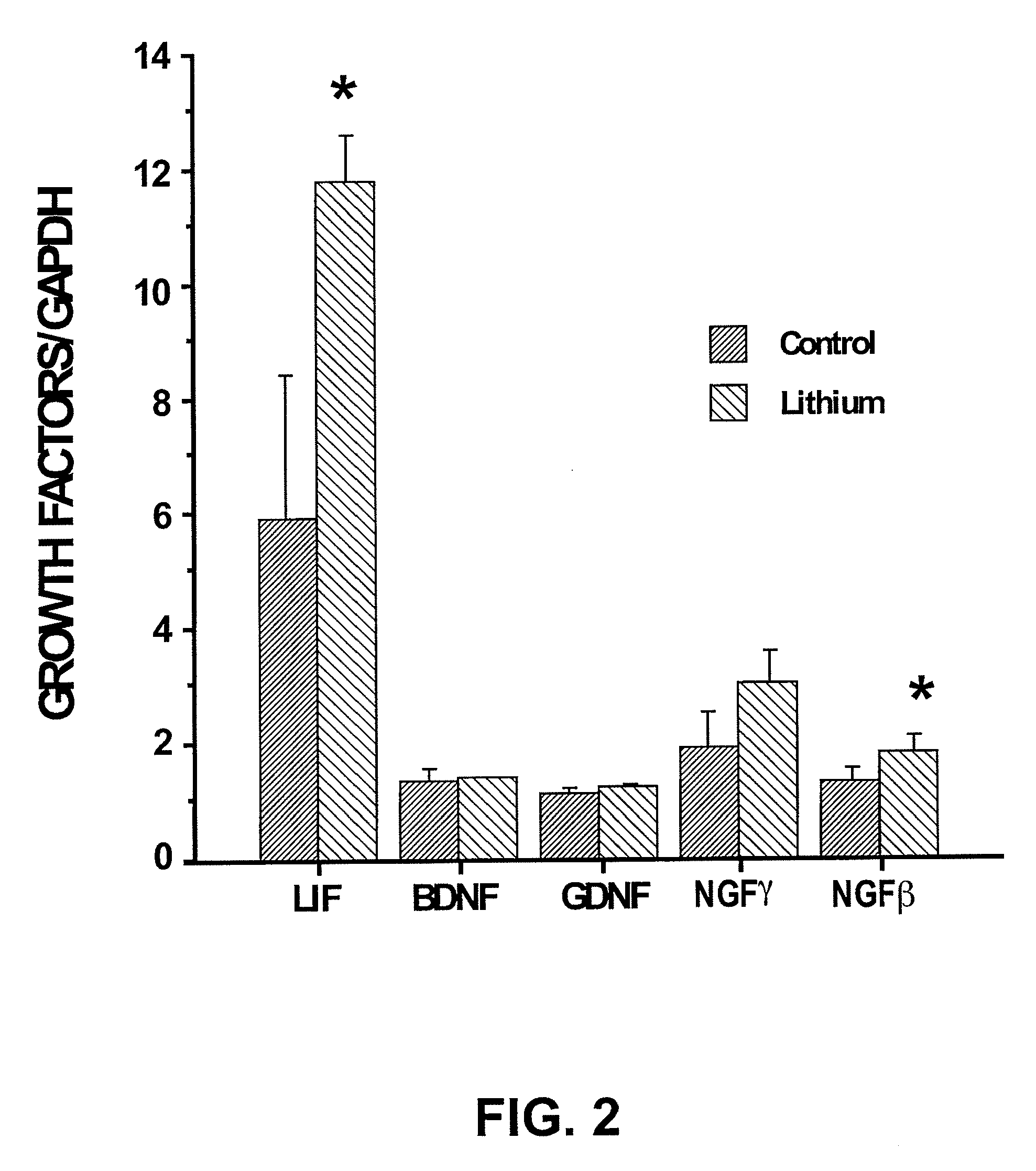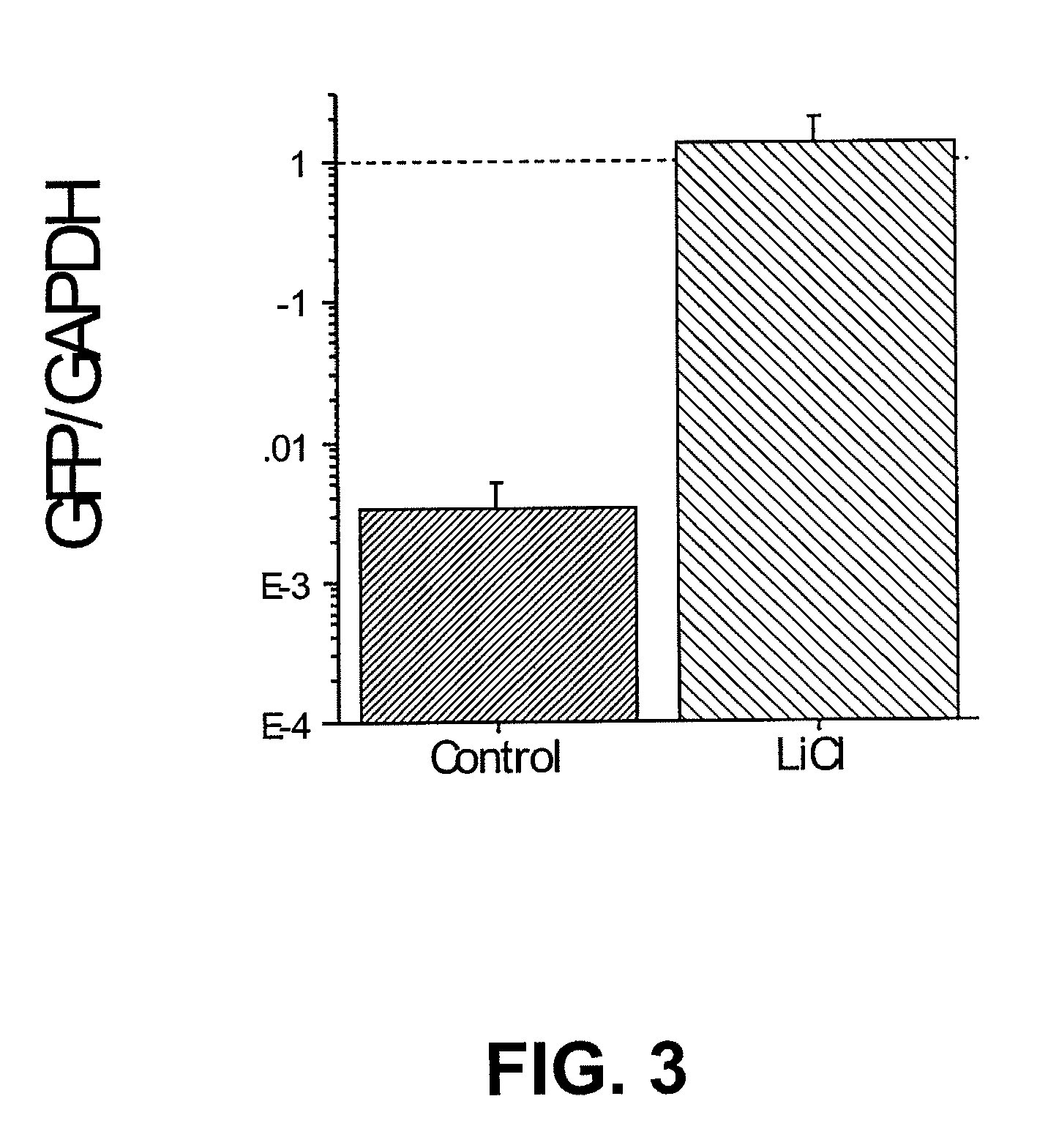Lithium stimulation of cord blood stem cell proliferation and growth factor production
a technology of growth factor and stem cell proliferation, which is applied in the field of identification, isolation and generation can solve the problems of difficult to obtain sufficient quantities, difficulty in obtaining sufficient numbers of human stem cells, and difficulty in isolation of normally occurring populations of stem cells in adult tissues, so as to enhance the survival and growth stimulate growth factor production, and reduce the rejection of transplanted cord blood stem cells
- Summary
- Abstract
- Description
- Claims
- Application Information
AI Technical Summary
Benefits of technology
Problems solved by technology
Method used
Image
Examples
example 1
Lithium Stimulation of Rat Neonatal Blood Cell Proliferation and Growth Factor Production
[0100]This example illustrates that lithium promotes the proliferation and growth factor production of stem cells isolated from neonatal rat blood (N01.1 cells). Lithium also enhances the survival and growth of transplanted N01.1 cells.
Results
[0101]In vitro. FIG. 1 shows that lithium promotes N01.1 cell proliferation in vitro. N01.1 cells were cultured in growth medium containing 3 mM lithium chloride for 7 days. Cell number was counted for both groups. The number of cells in the lithium chloride group was 359% higher than the control group. Lithium-treated N01.1 cells were still Nestin positive.
[0102]FIG. 2 shows that lithium stimulates N01.1 cell growth factor production in vitro. The mRNA levels of growth factors such as LIF, BDNF, GDNF, NGFγ, and NGFβ in N01.1 cells cultured with or without 3 mM lithium chloride was determined using quantitative real-time PCR. LIF and NGFβ mRNA levels were ...
example 2
Lithium Stimulation of Human Umbilical Cord Blood Cell Proliferation and Growth Factor Production
[0115]This example illustrates that lithium promotes the proliferation and growth factor production of stem cells isolated from human umbilical cord blood.
[0116]FIG. 8 shows that lithium promotes human umbilical cord blood cell proliferation in vitro. Human mononuclear cells were isolated from fresh human umbilical cord blood and cultured in growth media containing fetal bovine serum (FBS) with or without 3 mM lithium chloride. In lithium-treated cultures, the cell number was higher than in control cultures during the length of the 8-week study. Although the total cell number decreased in both lithium-treated and control cultures after 5 weeks, there were significantly more cells in lithium-treated cultures at week 8.
[0117]FIG. 9 shows that lithium stimulates growth factor production in vitro. Human mononuclear cells were isolated from fresh human umbilical cord blood. Cells were culture...
PUM
| Property | Measurement | Unit |
|---|---|---|
| concentration | aaaaa | aaaaa |
Abstract
Description
Claims
Application Information
 Login to View More
Login to View More - R&D
- Intellectual Property
- Life Sciences
- Materials
- Tech Scout
- Unparalleled Data Quality
- Higher Quality Content
- 60% Fewer Hallucinations
Browse by: Latest US Patents, China's latest patents, Technical Efficacy Thesaurus, Application Domain, Technology Topic, Popular Technical Reports.
© 2025 PatSnap. All rights reserved.Legal|Privacy policy|Modern Slavery Act Transparency Statement|Sitemap|About US| Contact US: help@patsnap.com



